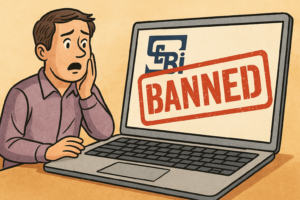In this blog, you can learn about the Business Model of OpenAI as we unravel their innovative business model with Alexander Osterwalder’s Canvas, offering insights into the AI giant’s strategy and impact.
As artificial intelligence (AI) continues to impact and revolutionize various industries, one company stands out as a major player in the development and democratization of AI technologies: OpenAI. Founded by an illustrious group of entrepreneurs, scientists, and investors, including Elon Musk, Sam Altman, Greg Brockman, Ilya Sutskever, and Wojciech Zaremba, OpenAI has made significant strides in creating state-of-the-art AI models and tools.
In this blog post, we will explore OpenAI’s business model using Alexander Osterwalder’s Business Model Canvas, a strategic management tool that visually maps out the essential components of a business model. By understanding the various elements of OpenAI’s business model, we can gain insights into how the company has positioned itself for success in the rapidly evolving AI landscape.
OpenAI: The Founding Story
OpenAI was founded in 2015, with the goal of advancing digital intelligence in a way that would be beneficial to humanity. The founders believed that AI should be developed and distributed for the common good, rather than being controlled by a select few. To achieve this objective, OpenAI is committed to creating AI technologies that are safe and have a broad societal impact. In addition, the company focuses on long-term research to ensure AI remains beneficial in the future.
The founders of OpenAI recognized the importance of collaboration and cooperation in achieving their mission. Consequently, they set out to build a community of researchers and engineers who could contribute to the development of AI technologies while maintaining a strong focus on transparency and openness. This approach has allowed OpenAI to establish itself as a pioneering force in the AI industry.
Now, let’s delve deeper into OpenAI’s business model using Alexander Osterwalder’s Business Model Canvas. The Canvas is divided into nine building blocks that encompass the key elements of a successful business model. These are:
- Customer Segments
- Value Propositions
- Channels
- Customer Relationships
- Revenue Streams
- Key Resources
- Key Activities
- Key Partnerships
- Cost Structure
Customer Segments
OpenAI’s customer segments include a diverse range of industries and organizations that can benefit from AI technologies. Some of the key customer segments include:
- Research institutions: OpenAI collaborates with research institutions worldwide to advance the field of AI.
- Technology companies: OpenAI’s AI models and tools are used by technology companies to build products and services.
- Governments and policymakers: OpenAI works with governments to develop policies and regulations related to AI.
- Enterprises: Businesses across various industries use OpenAI’s AI technologies to enhance their operations and decision-making processes.
- Individual developers and researchers: OpenAI’s open-source approach encourages individual developers and researchers to utilize their AI models and tools.
Value Propositions
OpenAI offers several value propositions to its customers and stakeholders:
- State-of-the-art AI models and tools: OpenAI is at the forefront of AI research, producing groundbreaking models like GPT-3 and Codex, which have numerous applications across different industries.
- Open-source approach: OpenAI’s commitment to openness allows developers and researchers to access, modify, and build upon their AI technologies, fostering a collaborative environment.
- Focus on AI safety: OpenAI prioritizes the safe development of AI, ensuring that its technologies are designed to minimize risks and maximize benefits for humanity.
- Long-term research orientation: OpenAI invests in long-term research to address the complex challenges of AI development and ensure that AI remains beneficial in the future.
Channels
OpenAI primarily uses the following channels to deliver its value propositions:
- Research publications: OpenAI shares its research findings through academic publications, blog posts, and preprints on platforms like arXiv. This enables the broader scientific community to access and build upon their research.
- Online platforms: OpenAI provides access to its AI models and tools through online platforms like the OpenAI API, which allows developers to integrate OpenAI’s technologies into their own applications and services.
- Conferences and events: OpenAI participates in AI conferences and industry events to present its research and engage with the community. This helps to foster collaboration and knowledge sharing among AI professionals.
- Partnerships: OpenAI forms strategic partnerships with other organizations to facilitate the distribution and integration of its AI technologies in various industries.
Customer Relationships
OpenAI maintains strong relationships with its customer segments through the following strategies:
- Collaboration: OpenAI actively collaborates with research institutions, enterprises, and governments to advance AI research and address common challenges.
- Support: OpenAI provides support to developers and researchers using their AI models and tools, helping them overcome technical challenges and maximize the potential of their AI technologies.
- Engagement: OpenAI engages with the AI community through conferences, events, and online platforms to maintain an ongoing dialogue and gather feedback on their research and technologies.
Revenue Streams
OpenAI primarily generates revenue through the following streams:
- API access: OpenAI charges fees for access to its AI models and tools through the OpenAI API. The pricing model includes different tiers based on usage levels and features, catering to various customer segments.
- Research grants: OpenAI receives funding from research grants and donations to support its long-term research projects and collaborations.
- Licensing and technology transfer: OpenAI licenses its AI technologies to enterprises and organizations, enabling them to utilize OpenAI’s state-of-the-art models and tools in their own products and services.
- Strategic partnerships: OpenAI enters into partnerships with other organizations to co-develop and commercialize AI technologies, generating revenue through shared profits or fees.
Key Resources
OpenAI’s key resources include:
- Talented researchers and engineers: OpenAI’s team consists of world-class researchers and engineers who drive innovation in AI research and development.
- Intellectual property: OpenAI’s cutting-edge AI models and tools are protected by patents and other intellectual property rights, ensuring the company’s competitive advantage.
- Research infrastructure: OpenAI has access to state-of-the-art research facilities, computing resources, and data storage, enabling the company to carry out advanced AI research.
- Funding: OpenAI has secured significant funding from investors and research grants, providing the financial resources needed to support its ambitious research goals.
Key Activities
OpenAI’s key activities include:
- AI research and development: OpenAI conducts cutting-edge research in AI, developing new models, algorithms, and tools that advance the field.
- Collaboration and partnership building: OpenAI forms strategic partnerships and collaborates with research institutions, enterprises, and governments to further its mission.
- Open-source development: OpenAI actively contributes to open-source projects, sharing its AI models and tools with the wider community.
- Policy and safety research: OpenAI conducts research on AI safety and policy, working towards the development of safe AI technologies and advocating for responsible AI governance.
Key Partnerships
OpenAI has forged several key partnerships to advance its mission, including:
- Research institutions: OpenAI partners with universities and research organizations to collaborate on AI research projects and share resources.
- Technology companies: OpenAI forms partnerships with technology companies to integrate its AI models and tools into their products and services.
- Governments and policymakers: OpenAI works with governments to develop AI policies and regulations that ensure the safe and responsible development of AI technologies.
- Industry consortia: OpenAI participates in industry consortia, like the Partnership on AI, to collaborate with other organizations on AI research, safety, and policy initiatives, fostering a cooperative approach to addressing the challenges and opportunities presented by AI technologies.
Cost Structure
OpenAI’s primary costs are associated with the following areas:
- Research and development: OpenAI invests heavily in AI research and development, incurring costs related to personnel, computing resources, data storage, and research facilities.
- Talent acquisition and retention: OpenAI competes for top talent in the AI field, resulting in costs associated with competitive salaries, benefits, and professional development opportunities for its employees.
- Infrastructure and maintenance: OpenAI incurs costs related to maintaining and upgrading its research infrastructure, including hardware, software, and data storage solutions.
- Partnerships and collaborations: OpenAI’s partnerships and collaborations involve costs related to resource sharing, co-development efforts, and joint ventures.
- Outreach and community engagement: OpenAI invests in engaging with the AI community through conferences, events, and online platforms, incurring costs related to travel, event organization, and marketing efforts.
By examining OpenAI’s business model through the lens of Alexander Osterwalder’s Business Model Canvas, we can gain valuable insights into the company’s strategic positioning in the rapidly evolving AI landscape. OpenAI’s commitment to openness, collaboration, and long-term research has allowed it to establish itself as a pioneer in the AI industry.
Key takeaways from OpenAI’s business model include:
- A diverse range of customer segments, including research institutions, technology companies, governments, enterprises, and individual developers.
- A focus on delivering value through state-of-the-art AI models, an open-source approach, AI safety research, and long-term research orientation.
- A mix of revenue streams, including API access, research grants, licensing, and strategic partnerships.
- A strong emphasis on key resources, including talented researchers, intellectual property, research infrastructure, and funding.
- A clear understanding of key activities, such as AI research, collaboration, open-source development, and policy research.
- The importance of forging key partnerships with research institutions, technology companies, governments, and industry consortia.
- A cost structure that reflects the company’s heavy investment in research, talent, infrastructure, partnerships, and community engagement.
As AI continues to impact various industries and reshape the world, OpenAI’s mission to ensure that AI benefits all of humanity remains more relevant than ever. By understanding the company’s business model and strategies, we can appreciate the factors that have contributed to its success and draw lessons that can be applied to other organizations in the AI industry and beyond.
If you’re a startup founder, submit your startup story for free with us
Did you know? Startups like to use our coworking space in Bangalore
Call +917090977222 to reserve your space at Work Theater
Learn more about our coworking space on our YouTube channel Work Theater Studios where we talk about a variety of topics including personal finance, entrepreneurship, business and life.




